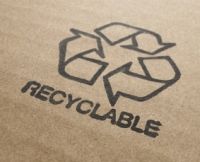

Nestle UK and Ireland's Fawdon-based factory has achieved Zero Waste to Landfill by diverting waste to anaerobic digestion (AD).
The confectioner opened the on-site AD plant in 2014, and has since sent the four tonne solid waste and 200,000 litres of liquid effluent produced every day to the facility for treatment.
The waste is locked into an airtight tank, cutting off oxygen, where the bacteria inside the tank decomposes the waste itself, producing a biogas and digestate byproduct.
The gas is then used in a combined power and heat (CHP) engine, and produces around 8% of the site's energy needs.
Nestle also claim the £3.2 million investment into the plant has seen quality of water improve, and a reduction of greenhouse gases by around 10%, thanks to the renewable heat and power source.
Andrew Griffiths, sustainability manager for Nestle UK, said: "The AD system allows us to convert a large amount of waste that would otherwise enter sewage, be used as feed stock, or be disposed of at landfill systems, where it would generate methane and other greenhouse gas emissions."
Cedrec's take
Congratulations to Nestle UK. It is a brilliant step forward for the Newcastle factory, and a big achievement overall for the global brand, showing real commitment to zero waste initiatives.
A £3.2 million investment into an anaerobic digestion facility is not a cheap fix by any stretch of the imagination, and will of course prove almost impossible for every waste generating organisation to follow. It is hopeful, however, that some kind of lead can be taken from Nestle's success. In one year, the factory has achieved zero waste to landfill, perhaps this could be the nudge for Government funding or some other form of providing more companies with anaerobic digestion options in order to achieve national zero waste.